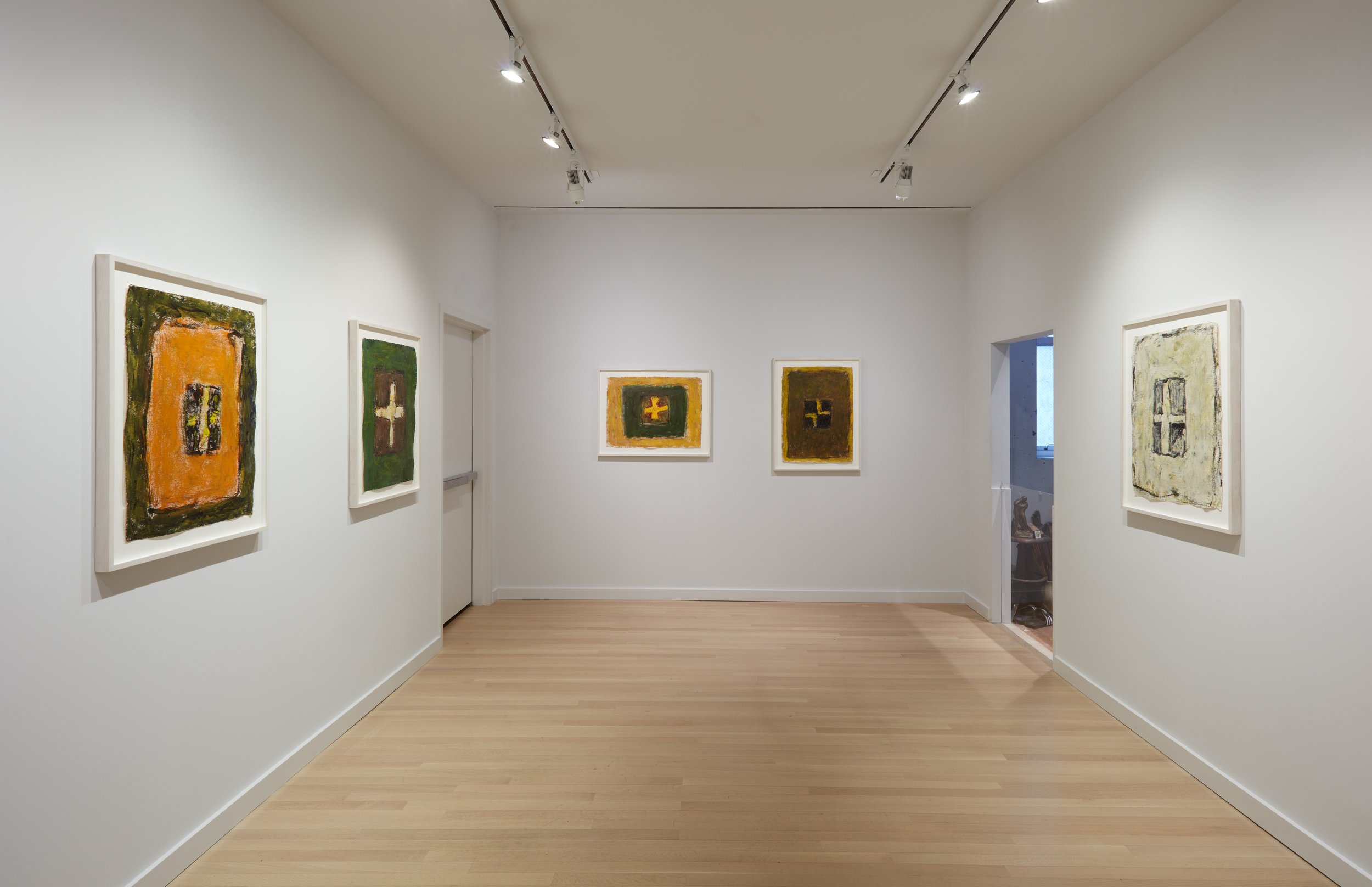MILTON RESNICK: Insignias
March 16, 2023 - February 10, 2024
Insignias is an exhibition of paintings on paper by Milton Resnick (1927-2004) on view from March 16, 2023 through February 10, 2024. The specific works shown from this series were made at the end of Resnick’s life between 2002-2004.
Almost all the work on paper from the last twenty years of his life was painted with watercolor, gouache, or on larger sheets of rag with acrylic paint. Oil paint was reserved for the linen canvas Resnick favored.
In the final two or three years of his life, he turned increasingly to abstractions of an insignia or medallion nature, but these paintings act out much the same as the allegories. The crosses and X’s are likely abstracted from his figures, many of which have arms outstretched. There is classical precedence for this. Leonardo had famously configured the human body in the gestalt of a T and an X after Vitruvius, but Resnick was unlikely to be alluding to Leonardo’s figure, unless good-naturedly mocking him. Black humor and mockery season his late poetry but never overpower it, and truly there is something faintly satirical about these insignias that can never seem to locate their center. The X, a sign of negation, and the cross, a sign of affirmation, both frequently decompose into two elbows that can’t bring themselves to align properly. The attitude towards symmetry and order is light-heartedly derisive.
Russian mysticism was suspected as possible source material, mainly because Resnick had photographs of Theosophists and mystics pinned to the wall of his little studio; Madame Blavatsky, Gurdjieff, Aleister Crowley, and Rasputin (twice.) If Theosophy or its derivatives exerted any influence on his thinking it would likely have shown up in his poetry, and that is mercifully free of it. Yet the temptation to interpret the Insignias is difficult to resist, partly because of his absorption with Hesiod, the mythical ages of man predating antiquity — worldwide Neolithic churches and the like — that were fairly commonplace in writings on cultural anthropology and history of religions during his youth. Of course, Resnick was no scholar. Whether his readings ever amounted to anything (f)actual would have mattered little to him. As he put it in a radio interview, “Most people think they are real and something you imagine is not. Most of the time they are not as real as they think.” If these stories sparked his imagination, then for the purposes of art that alone would suffice. If a subject provided him with an occasion to paint, that was all he required. Ideas and narratives were grist for the mill; nothing more, and he made use of them if it pleased him to. As Resnick often put it, “content is at best a loose garment.”
- Geoffrey Dorfman













